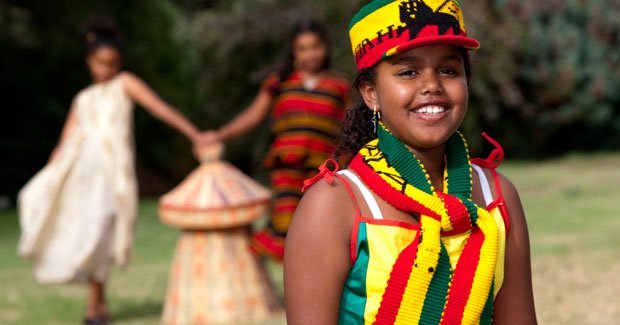The Ethiopian Australians

WHEN THEY FLED ETHIOPIA as political refugees in 1988, Meaza Abetew says she and her husband didn’t know what to expect in Australia. But they found lots of similarities with people at home. “We were made very welcome by Australian society, and Ethiopians are the same. If you are a foreigner, they will welcome you warmly.”
Now Abetew, who lives in Melbourne, says she’s looking forward to sharing more about her homeland’s culture and traditions at a one-day Ethiopian Festival at Melbourne’s Immigration Museum on Sunday, April 18.
Ethiopians have a fairly recent history in Australia. The first to take Australian citizenship arrived in 1965 on a student scholarship. But many more migrants began arriving in the 1970s, after the Derg government assumed power. Between 1977 and 1978, over 30,000 people in Ethiopia were imprisoned for anti-government activity. Fighting broke out between government forces and opposition groups. “Over half a million refugees fled to neighbouring countries,” says Nadya Tkachenko of the Immigration Museum. “Now there are just over 5,000 Ethiopia-born migrants in Australia.”
Dance, music and coffee
Abetew is helping to organise the festival, which will feature displays of dance, music, woven baskets, ceramics and jewellery, as well as a traditional coffee ceremony. First, the green coffee beans are roasted over hot coals, then participants are invited to smell the smoke before the beans are ground in a wooden mortar and pestle. The ground coffee is then boiled in a pot called a jebena. There are two rounds of brewing in some regions of Ethiopia, and three in others, says Abetew. “It takes a while! It’s to socialise – for people to talk to each other.”
Traditional Ethiopian foods, such as vegetable and chicken stews, will also be on offer. And among the objects on display will be a traditional mesob. Woven from straw, it is used for serving food. “You eat food with your fingers from the mesob. And if you are a guest you might be fed from it by other people – it’s a way to welcome guests,” Abetew explains. Up to five or six people might eat from one mesob, she says.
Different ethnic groups from Ethiopia have their own distinctive costumes, which will also be shown in a fashion parade at the festival. While some of these groups are traditionally Muslim, others are Christian, and the Ethiopian Orthodox Church Choir will give a performance. “It’s a chance for us to showcase our culture – to give an insight into Ethiopian life,” Abetew says.
The Immigration Museum is at 400 Flinders Street, Melbourne. The festival is on from 11am to 4pm.
LINKS
The Immigration Museum
Exhibit reveals history of Australia’s Muslim cameleers

